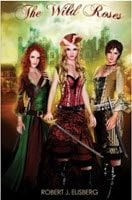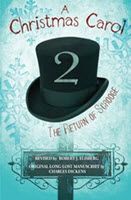|
As I just mentioned below, Vin Scully, the longtime announcer of the Los Angeles Dodgers, announced yesterday that he would be coming back to broadcast next year. How long is "longtime"? It will be his 65th year. And how long is 65 years? When Scully began announcing, nobody in his neighborhood had a television! "The first time my mother and father ever saw me on television, they had to go to a restaurant," he said. Over on his website here, Mark Evanier posted a short video yesterday that a local L.A. station did of baseball announcer Vin Scully's five greatest calls. Mark makes the spot-on point that these aren't Scully's greatest calls. That when there's so much drama in the moment, it's not an announcer's greatest skill making that moment great. But rather, when a game was boring, Scully could make it majestic. He's quite right, those aren’t even close to Vin Scully’s “greatest calls.” What they are are most-likely the Greatest Moments he’s called. Two separate things. And like Mark, saying that what makes Vin Scully great is how well he calls a nothing game, I’ve similarly described what I consider a great writer: someone who is brilliant not just at his best, but also at his worst. That said, that video didn’t do Scully justice in another way, because I actually could consider the top two clips his greatest – but reversed, and for different reasons. The call of Kirk Gibson's game-winning home run in the 1988 World Series is, indeed, brilliant -- but not for the “She…is…gone!” (which is charming and wonderful). Rather, what is brilliant is what he says as Gibson rounds second base. “In a year of the improbable, the IMPOSSIBLE has happened.” Now, that is a great call, a remarkable line pulled from out of the blue. And what makes the call of Sandy Koufax's perfect game in 1965 (against, alas, the Chicago Cubs) so stunning -- and his greatest call, not second best, like the TV station had it -- is not the “Strike three! Koufax has a perfect game,” but what he says during the entire ninth inning. I’ve not only heard a tape of it, him setting up every single tense moment as if it was poetry, but I have a book of “Great Baseball Writing,” and amid all these truly great writings, there is one chapter that is nothing more than just a transcript of Vin Scully’s play-by-play of the ninth inning, without a word changed, and it reads like great literature. “There are 29,000 people in the ballpark, and a million butterflies.” Here’s the audio. THIS is why that – the whole thing, all 10 minutes, the minutiae, the details, the painting with audio for the mind’s eye, the bringing emotion through the radio into the listener -- is Scully’s greatest call. (I should note, for the historic record, that on that night, the opposing pitcher for the Chicago Cubs, Bob Hendley, only gave up ONE hit. And it didn't even factor in the sole run the Dodgers scored to win the game, 1-0. That unearned run came in another inning, thanks to a walk and unearned error. Hendley and Koufax pitched against each other five days later, and that game he won 2-1.) Keep listening afterwards when edited onto the tape is Vin Scully's explanation of why he keeps giving the time throughout the inning. The short answer is that it was simply for the pitcher himself, when he listened to it years later. Scully acknowledges that he had no idea that everyone who found that that was one of the very things that made it all so deeply dramatic. And so it is. Even half a century later, when you know exactly what happened. That's a great call.
0 Comments
Leave a Reply. |
AuthorRobert J. Elisberg is a political commentator, screenwriter, novelist, tech writer and also some other things that I just tend to keep forgetting. Feedspot Badge of Honor
Archives
June 2024
Categories
All
|
|
© Copyright Robert J. Elisberg 2024
|






 RSS Feed
RSS Feed